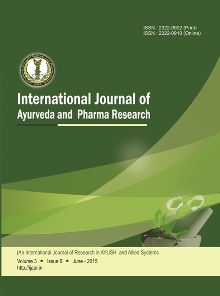Formulation and In Vitro Evaluation of Gabapentin Controlled Release Tablets Using Natural Polymers
Abstract
This research set out to find the best way to use various grades of controlled-release polymer. To create a new one that would be just as effective as the original, but cheaper, and of better quality. The dosage form was designed using Hydroxypropyl Methyl Cellulose (HPMC K15MCR) as matrix builders. Research on the compatibility of medication and polymer was carried out. The flowability of the powder blend was optimized after studying the blend. Uniformity Compressing free-flowing powder directly into tablet form was the method of choice. They were successfully combined with the HPMC, MCC, and DCP networks. In order to compare different dissolution characteristics, we also presented the mean dissolving time. Clinical trials have shown that controlled-release gabapentin tablets are formulated by direct compression outperforms its immediate-release counterparts in terms of therapeutic efficacy.
Copyright (c) 2025 International Journal of Ayurveda and Pharma Research

This work is licensed under a Creative Commons Attribution-NonCommercial-ShareAlike 4.0 International License.


